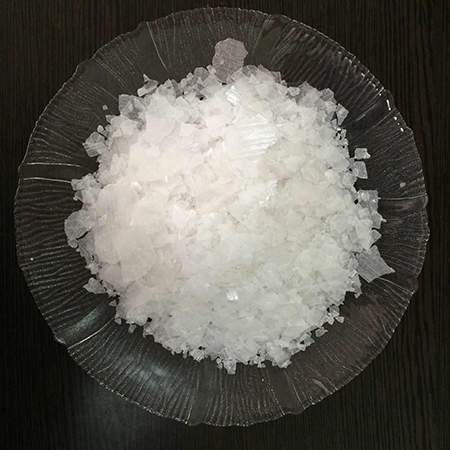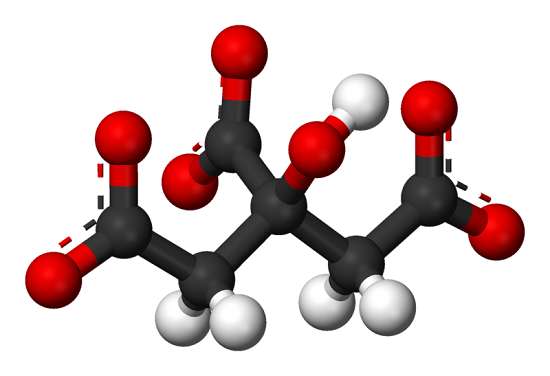Sodium hydroxide:pH calculation,Uses,Health hazards
Sodium hydroxide is sometimes called caustic soda or lye, it is usually sold in pure form as white pellets or as a solution in water. Sodium hydroxide is a common ingredient in cleaners and soaps.
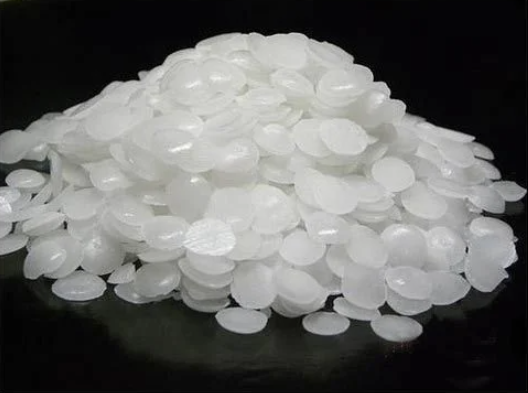
Properties
At room temperature, sodium hydroxide is a white, odorless solid. Liquid sodium hydroxide is colorless and has no odor. It can react violently with strong acids and with water. Sodium hydroxide is corrosive. NaOH can react with moisture from the air and may generate heat as it dissolves. This heat can be enough to cause a fire if it is near flammable materials.
Sodium hydroxide pH calculation
Sodium hydroxide is a strongly alkaline substance.
Its pH is calculated as follows:
P[OH]=-logC[OH]
PH=14-logC[OH]
Uses
Sodium hydroxide is useful for its ability to alter fats. It is used to make soap and as a main ingredient in household products such as liquid drain cleaners.
Sodium hydroxide is a popular strong base used in industry. Sodium hydroxide is used in the manufacture of sodium salts and detergents, pH regulation, and organic synthesis. In bulk, it is most often handled as an aqueous solution, since solutions are cheaper and easier to handle.
Sodium hydroxide is used in many scenarios where it is desirable to increase the alkalinity of a mixture or to neutralize acids. For example, in the petroleum industry, sodium hydroxide is used as an additive in drilling mud to increase alkalinity in bentonite mud systems, to increase the mud viscosity, and to neutralize any acid gas (such as hydrogen sulfide and carbon dioxide) which may be encountered in the geological formation as drilling progresses. Another use is in salt spray testing where pH needs to be regulated. Sodium hydroxide is used with hydrochloric acid to balance pH. The resultant salt, NaCl, is the corrosive agent used in the standard neutral pH salt spray test.
Health hazards
Sodium hydroxide is a potentially dangerous substance. It can hurt you if it touches your skin if you drink it, or if you breathe it. Eating or drinking sodium hydroxide can cause severe burns and immediate vomiting, nausea, diarrhea, or chest and stomach pain, as well as swallowing difficulties. Damage to the mouth, throat, and stomach is immediate. Breathing can cause severe irritation of the upper respiratory tract with coughing, burns, and difficulty breathing.
The harmful effects of sodium hydroxide depend on several factors including the concentration of sodium hydroxide, length of time exposed, and whether you touched it, drank it, or inhaled it. Contact with very high concentrations of sodium hydroxide can cause severe burns to the eyes, skin, digestive system, or lungs, resulting in permanent damage or death. Prolonged or repeated skin contact may cause dermatitis. Repeated inhalation of sodium hydroxide vapor can lead to permanent lung damage.
You may like
Related articles And Qustion
See also
Lastest Price from Sodium hydroxide manufacturers
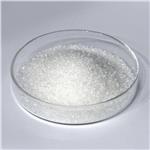
US $0.00-0.00/kg2025-04-21
- CAS:
- 1310-73-2
- Min. Order:
- 1kg
- Purity:
- 99.99%
- Supply Ability:
- 20 tons
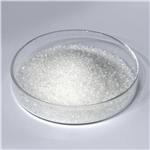
US $0.00-0.00/kg2025-04-21
- CAS:
- 1310-73-2
- Min. Order:
- 1kg
- Purity:
- 99.99%
- Supply Ability:
- 20 tons


